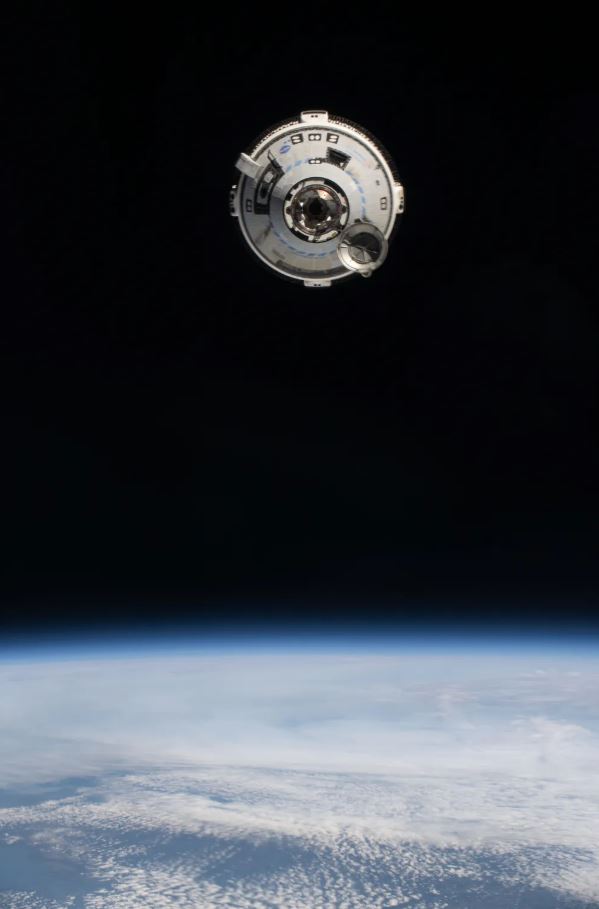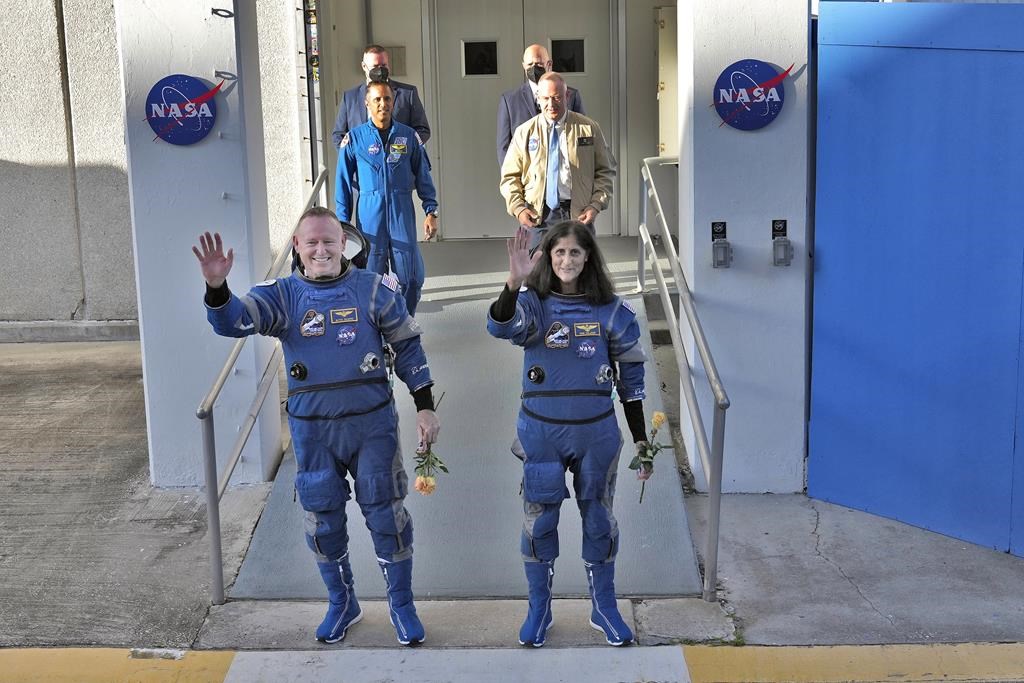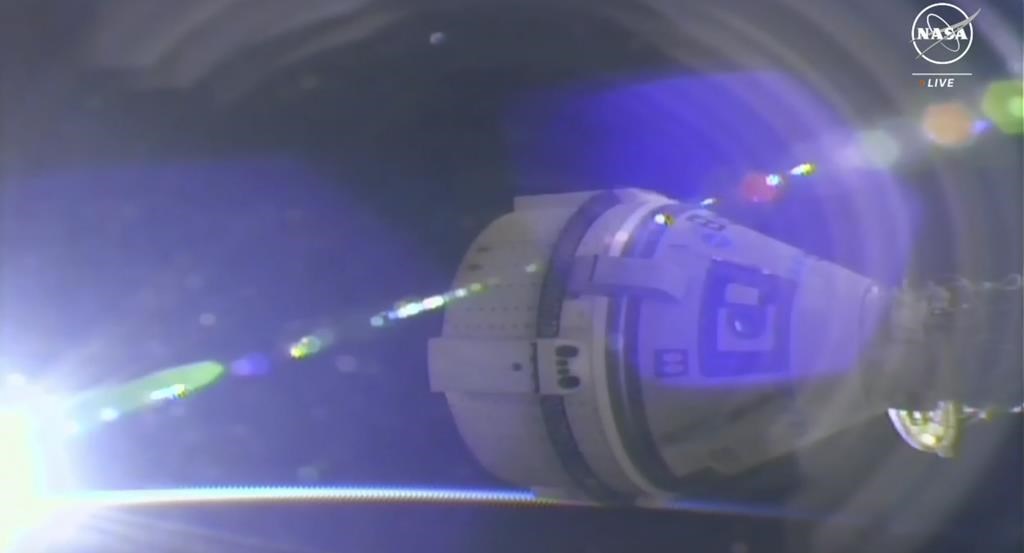FAA investigating flight control issues on Southwest
Boeing 737 Max
June 14 (UPI) -- The Federal Aviation Administration is investigating another issue involving a Boeing 737 Max aircraft after an incident involving a Southwest Airlines flight from Phoenix to Oakland.
The FAA confirmed it is looking into a so-called Dutch roll that took place on flight N8825Q on May 25, causing the airline to pull the passenger jet from service and send it back to Boeing for inspection.
Dutch roll refers to potentially dangerous lateral asymmetric movements of an aircraft. The term itself is supposedly derived from the movement of ice skaters.
Pilots on the Southwest Airlines flight saw the plane's tail yaw, a movement up and down on its vertical axis. Pilots also had to contend with tail wag from right to left, while the wings rocked in a side-to-side motion. They were able to recover and make a safe landing in Oakland with no injuries reported.
*Oooooh! That sounds like fun! Like a roller coaster. A roller coaster at 30,000 feet.
"[The] aircraft experienced a Dutch roll, regained control and post-flight inspection revealed damage to the standby PCU," the FAA said in its Accident and Incident Notification.
The PCU or Power Control Unit takes input from a pilot's rudder pedals or the aircraft's yaw damper system and directs the flow of hydraulic fluid in order to move the rudder.
FAA investigators will now look at what caused the issue aboard the Boeing 737 Max 8, which remains on the ground at the company's facility in Everett, Wash. Records show the plane was certified to fly in 2022.
The incident adds to a string of mishaps for Boeing after the door plug of a 737 Max 9 blew out midway through an Alaska Airlines flight in January, causing an explosive decompression. Boeing has since paid the airline $160 million in damages. The FAA later banned the company from expanding production of the passenger planes.
All variants of the 737 Max were grounded in virtually all airspace across the world in 2019 after the crash of Ethiopian Airlines Flight 302 in March of that year and the loss of Lion Air Flight 610 in October 2018.
Investigations found that both crashes were caused by a software glitch that caused the aircraft to automatically enter a steep dive.
The FAA lifted the grounding in 2020, however, other countries took much longer to allow it back into their commercial airspace. China only gave the plane the greenlight in early 2023.
Boeing Starliner spacecraft plagued with issues,
a 5th helium leak found
Boeing is facing another set of safety issues, but this time it transcends earthly operations.
The company has shared that its CST-100 Starliner spacecraft is currently docked at the International Space Station (ISS) and is suffering a fifth helium leak in its propulsion system.
In a statement earlier this week, NASA wrote that spacecraft teams are examining “what impacts, if any, five small leaks in the service module helium manifolds would have on the remainder of the mission.”
The news follows what can only be called a dicey start to the mission. After failed back-to-back launch attempts, the Starliner capsule finally launched last week. Once approaching the space station, it missed its first docking opportunity on June 6 due to technical issues.
After targeting another docking window, five of the spacecraft thrusters failed during its approach, forcing astronaut Butch Wilmore to take manual control of the craft for a period of time, before four of the thrusters were recovered and the capsule was returned to autonomous mode.
A week later, there was some panic after NASA accidentally broadcast a simulation of astronauts being treated for decompression sickness, prompting speculation of an emergency in posts on social media. In a live YouTube channel broadcast, a female voice could be heard telling crew members to “get commander back in his suit,” check his pulse and provide him with oxygen, later saying his prognosis was “tenuous.”
NASA later clarified that the “audio was inadvertently misrouted from an ongoing simulation where crew members and ground teams train for various scenarios in space and is not related to a real emergency.”
But now, the Starliner is facing the pesky problem of multiple helium leaks. According to SpaceNews.com, NASA knew about one leak at the time of the Starliner’s launch on June 5, but decided with Boeing officials it was a one-off problem and that the mission would go ahead.
“We can handle this particular leak if that leak rate were to grow even up to 100 times,” Steve Stich, manager of NASA’s Commercial Crew Program, said during a news conference before the Starliner launch, according to Gizmodo.
By the time the craft was well on is mission, hours after launch, controllers identified two more leaks.
Now, with a fifth leak detected, NASA says it’s assessing the impact of the leaks on the remainder of the mission, which includes undocking from the ISS and reentry into Earth’s atmosphere.
“While Starliner is docked, all the manifolds are closed per normal mission operations preventing helium loss from the tanks,” the space agency wrote earlier this week.
NASA seems confident at this point, that despite the anomalies and what appears to be a larger issue with Boeing’s propulsion system, that the Starliner will have enough helium to safely finish the mission and return to Earth.
“Engineers evaluated the helium supply based on current leak rates and determined that Starliner has plenty of margin to support the return trip from the station,” NASA wrote in its update. “Only seven hours of free-flight time is needed to perform a normal end of mission, and Starliner currently has enough helium left in its tanks to support 70 hours of free flight activity following undocking.”
Helium is used to pressurize the spacecraft’s reaction control system (RCS) maneuvering thrusters, allowing them to fire, according to Boeing.
Astronauts Wilmore and Sunita “Suni” Williams are continuing to test Boeing’s Starliner as part of the data collection required for potential NASA certification to send regularly crewed missions to the ISS. The space agency has been mostly using SpaceX’s Dragon craft to ferry crew and cargo to and from the ISS.
Williams and Wilmore’s tests include making sure Starliner can support a crew with its own air, making sure the craft can regain power after being put into minimal power mode during ISS missions and checking the service module’s batteries.
They were scheduled to return to Earth on Friday, June 14, but that date has been pushed back to June 18 at the earliest.
================================================================================================
U.S. FAA probing claims some Boeing jets
contain counterfeit titanium
The use of titanium in some recently manufactured Boeing jets is under scrutiny by the U.S. Federal Aviation Administration.
The FAA says it’s investigating whether false or incorrect records were used to verify the materials’ authenticity. The issue, first reported by the New York Times on Friday, revolves around a material that is an important component in the industry’s supply chain. Titanium is used to make landing gear, blades and turbine discs for aircraft.
“Boeing reported a voluntary disclosure to the FAA regarding procurement of material through a distributor who may have falsified or provided incorrect records,” the FAA said in a statement to Global News. “Boeing issued a bulletin outlining ways suppliers should remain alert to the potential of falsified records.”
According to the FAA, the agency is now investigating the scope and impact of this issue on the industry.
John Gradek, a professor in McGill University’s aviation management program, said in an interview this situation has sent the FAA and airlines “scrambling.”
“They’re scrambling to find out where has this titanium been used, how much titanium is already built on airplanes that came from this supplier and what risk is there to these aircraft,” he said. “It is a problem because it does deteriorate. It doesn’t have the characteristics of titanium that you would normally expect.”
Spirit AeroSystems, which supplies fuselages for Boeing and wings for Airbus, said it is also investigating the problem.
*Where did we hear about Spirit AeroSystems? Oh yes, The Alaska Air door blow-out.
“This is about titanium that has entered the supply system via documents that have been counterfeited,” Joe Buccino, a spokesperson for Spirit, told Global News. “When this was identified, all suspect parts were quarantined and removed from Spirit production.”
The company said it had taken steps to determine the airworthiness of the affected material by conducting more than 1,000 tests to confirm its “the mechanical and metallurgical properties.”
Airbus also confirmed to Global News that it was aware of the situation and at least one type of aircraft impacted, and had performed “numerous tests” on parts coming from the same source of supply. The FAA did not confirm to Global News if they were looking into Airbus jets.
“They show that the A220’s airworthiness remains intact,” a spokesperson for Airbus said in an email, adding the company was working in close collaboration with their supplier.
It is not clear outside of Boeing and Airbus if other airplane manufacturers have been impacted.
But in a statement to Global News, Boeing said the “industry-wide issue” affects some shipments of titanium received from a “limited set of suppliers” with tests performed to date indicating “the correct titanium alloy was used.”
Boeing added the issue impacts only a very small number of parts, but did not say which jets were impacted.
“To ensure compliance, we are removing any affected parts on airplanes prior to delivery,” Boeing said in a statement. “Our analysis shows the in-service fleet can continue to fly safety.”
*For how long?
This latest incident also comes at a time when Boeing continues to face heightened scrutiny, with the company explaining just last month how it would improve manufacturing quality and safety to the FAA. The company continues to face restrictions placed on them after one of its jetliners saw a blowout of a fuselage panel in January. The plan was crafted by comments from employees, the FAA, airlines and independent experts.
Gradek said there is concern about potentially counterfeit titanium on planes, noting the deterioration that could occur with the material and said it speaks to the ongoing concerns facing the industry.
“Customers, passengers expect to have these pieces, these components, every single piece of equipment on that airplane … all of that stuff basically has to meet a very, very stringent specification as far as the certifying agency,” he said.
“Counterfeit pieces of equipment, misguided, mislabeled, mis-categorized, mis-certified is not acceptable in terms of the quality of the equipment that we’re looking at putting on these aircraft.”
*If this happened in China, the suppliers would be hung.
— with files from Reuters and The Associated Press
=====================================================================













No comments:
Post a Comment